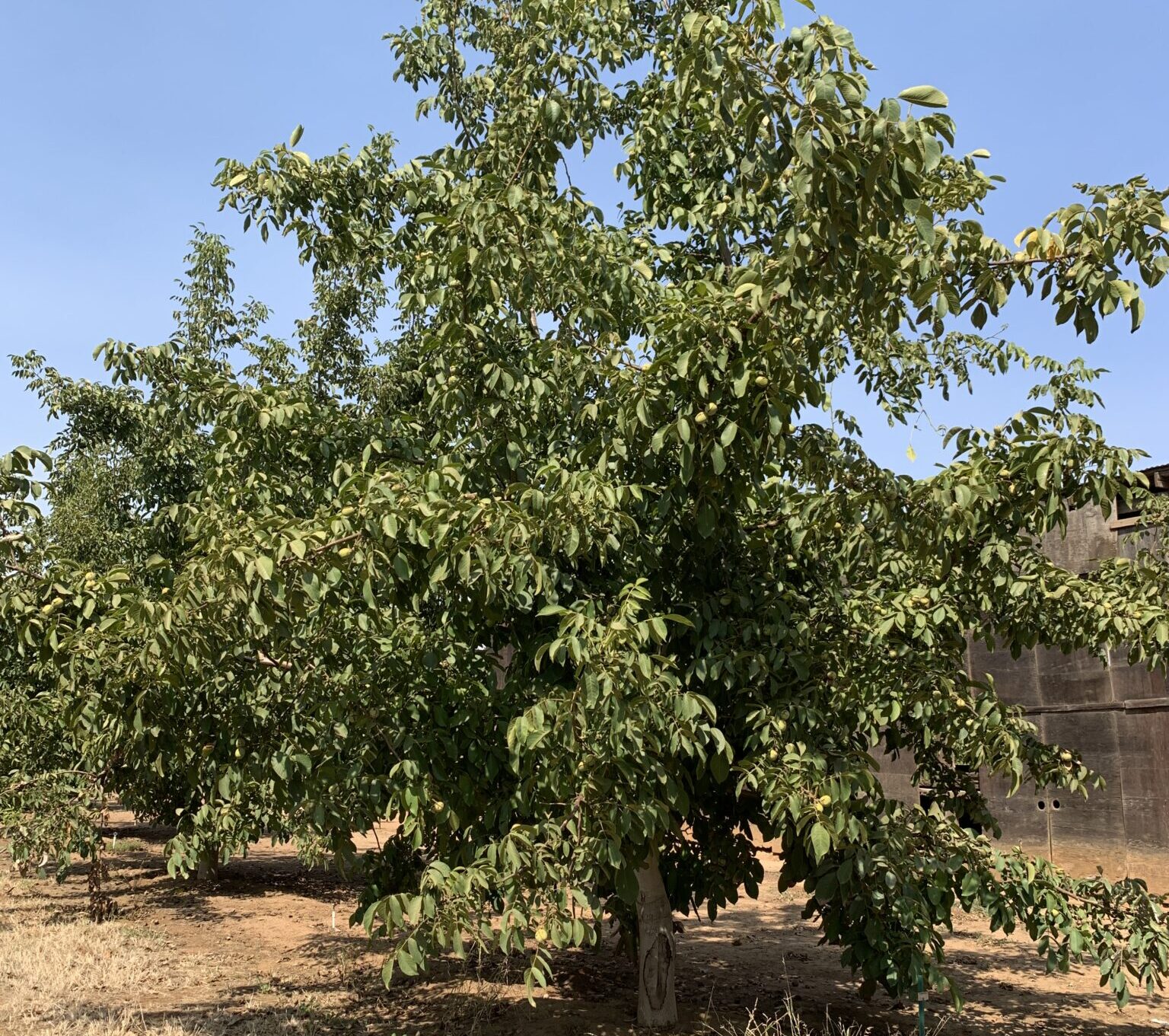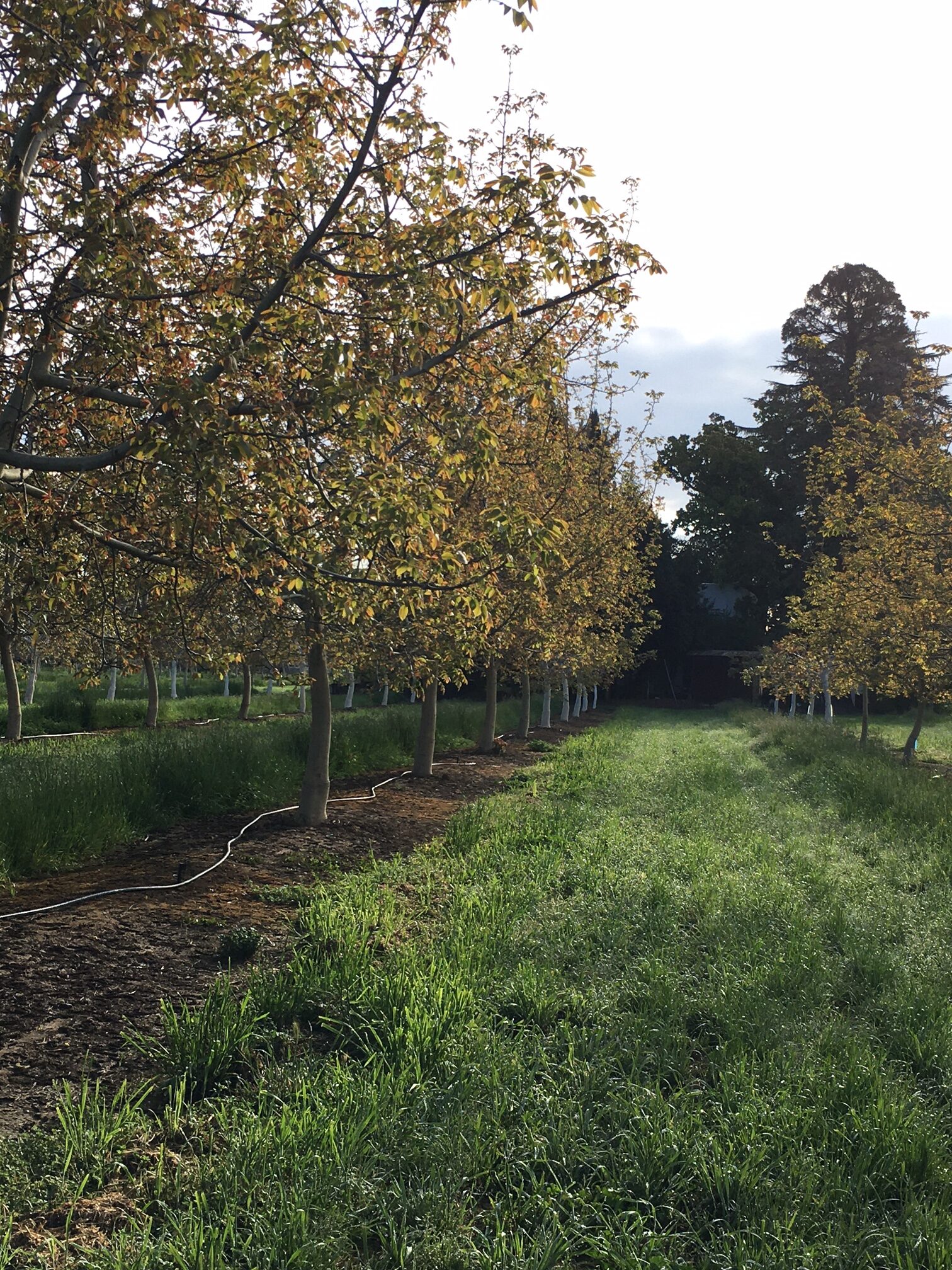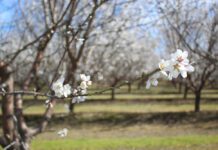
UC Davis’ newly released walnut variety UC Wolfskill came about due to a slightly different crossing technique than is traditionally used.
“The first step in breeding a new variety is to bag female flowers before they open and apply pollen from another selected variety with a syringe,” said Walnut Improvement Program Specialist Chuck Leslie, describing the process used to generate new walnut varieties.
In the case of UC Wolfskill, the plant breeding team, under Gale McGranahan at the time, went to a young Chandler orchard in an isolated location, removed catkins and applied a mixture of pollen in the air along the row of trees. Once the nuts were formed, they were collected and grown out to start the evaluation process.
Since a mixture of pollen was used to fertilize the flowers, the exact parentage could not be known until UC Davis Walnut Breeder Patrick J. Brown, using computing tools to look at differences in the DNA sequences of walnut varieties, was able to finger the early harvesting Solano variety as the provider of half of UC Wolfskill’s genes.
Hundreds of seedling trees from crosses are grown each year in the UC Davis Walnut Improvement Program, funded by the California Walnut Board (CWB), but very few will have the combined traits and production required to make it all the way to release for commercial use. The UC Wolfskill variety results from a cross made in 2003. It was named after John R. Wolfskill, an early pioneer and horticulturist in the Sacramento Valley.
Walnut Selection Process
Leslie explained that once the seedling trees begin to grow, the evaluation, and elimination, process begins. Trees with undesirable leafing traits, poor yield or dark kernels are culled while young. The most promising of the crosses remain and keep growing, and evaluation continues. Some are grafted to rootstocks to produce multiple copies in the University trial orchards.
If they continue to show favorable traits on campus, they are tested further in small commercial orchard trials where growers provide additional evaluation under their own conditions and in different areas of the state.
Depending on their interest, tolerance for risk, and orchard design, they may plant only a few or whole rows of prospective new varieties to see how they perform. Leslie said that trying potential varieties in a commercial production system is a critical part of the evaluation process. It gives growers a chance to observe tree growth habit and production for themselves and gives real-world information before deciding on release.
“Growers will share their observations and give feedback to the Walnut Improvement Program about the trees. Are they upright? What is the yield? Kernel quality? When do they leaf out? All of these are important traits for commercial walnut production,” Leslie said. “Through the Walnut Board, growers fund the program, and we want to give them value in return.”
In addition to annual infusions of support for the breeding program, funding also comes to the program from the proceeds of a $2 million CWB endowment set up years ago as a stable source of long-term supplemental support.
Leslie said while yield and kernel color are the most important traits in walnut production, the additional focus of the program in recent years has been on introducing varieties that harvest earlier than Chandler, another UC variety that was released in 1979. Since that time, Chandler has become the most widely planted walnut variety in the state, commanding half of the walnut acreage and producing nearly 60% of the state’s crop. Harvesting, hulling and drying that huge Chandler crop in a timely manner is a challenge for the walnut industry, and the reason why new productive and high-quality varieties that harvest earlier than Chandler are needed.
It is hoped that as UC Wolfskill orchards are planted and mature, they will help fill the roughly two-week harvest window between earlier varieties and Chandler. Pollinizers for UC Wolfskill are Chandler, Howard and Tulare.
Phenology varies a bit depending on the location of the orchard, but Leslie said that leaf-out of UC Wolfskill is about the last week of March and harvest is in the September 23 to 25 range, 12 to 14 days before the Chandler harvest begins.

Goals of the Breeding Program
UC Davis walnut breeder Patrick J. Brown said increasing grower profitability, industry sustainability and staying power, and driving consumer demand are three goals of the Walnut Improvement Program.
In his presentation for the virtual UCCE Statewide Walnut Series, Brown said that challenges for the program include developing walnut varieties that have lower chill requirements and blight resistance. Improving walnut shelf life while retaining the health benefits of walnuts is another area where the program is directing research.
Earlier leafing genotypes, including UC Wolfskill, are expected to require less winter chill, Brown explained. Later varieties, including Chandler, have higher chill requirements, which can result in staggered bloom and harvest. In the other direction, late-leafing varieties are better for blight avoidance.
Joe Grant, research director for CWB, said no big surprises are expected with UC Wolfskill moving into commercial production as it is a very ‘adaptable’ variety and will perform well under a range of environmental conditions and locations in the state’s walnut growing regions. Most have been grafted on Paradox rootstocks, but nurseries propagating UC Wolfskill can decide on rootstocks depending on specific growing conditions.
The oldest UC Wolfskill trees are now 10 to 12 years old and at the peak of production. The mature trees look similar to Chandler and are upright with open stature. They adapt well to the minimal pruning techniques used in many new orchards, Grant said.
UC Wolfskill is also a high-producing and precocious variety, producing a harvestable crop by year 4 and ramping up to full production by year 9 or 10.
Kernel quality is impressive, Grant said. They are a consistent light color and a fairly large nut with a shelling percentage well over 50%.
“This variety will fill an important window in California walnut production,” Grant said. “There are not a lot of good varieties that mature in that time slot.
“Our goal is to be a valued supporter to our grower and handler community by providing funding for research that improves orchard health, yields, and sustainability,” he said of the CWB.
Grant said there has been a lot of interest in UC Wolfskill from walnut growers and nurseries. Given the recent soft markets for walnuts, he said it is good to see an uptick in interest in planting new varieties.
UC Wolfskill is now available to California nurseries for propagation in California and sales to growers throughout the state. Nurseries interested in propagating and selling this cultivar may obtain a license from UC Davis InnovationAccess.
















